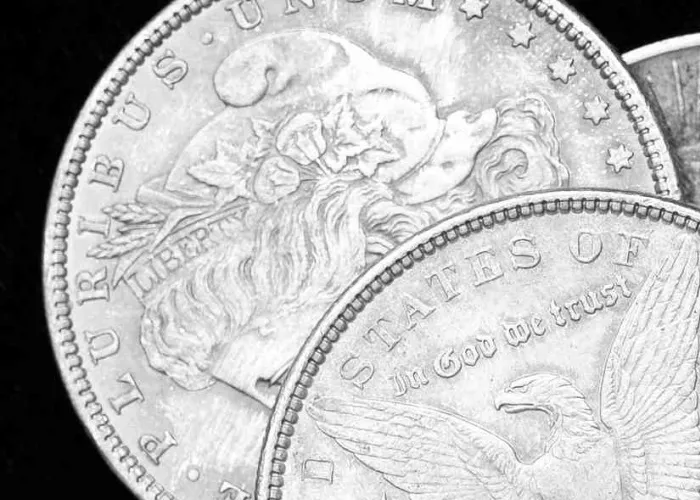Silver prices have faced downward pressure in recent trading sessions, hovering around $31.20 per troy ounce during the Asian session on Wednesday. The precious metal’s recent retracement can be attributed to a combination of factors, including a key policy decision by the People’s Bank of China (PBoC) and ongoing geopolitical uncertainties, particularly the intensifying Russia-Ukraine conflict. Despite these headwinds, silver continues to be viewed as a safe-haven asset, with some signs of support emerging from a weakening US dollar.
PBoC’s Rate Decision Weighs on Industrial Demand
The PBoC’s decision to keep its benchmark interest rate steady at 3.1% for November is one of the primary factors exerting downward pressure on silver prices. While the move was expected, it underscores concerns over slowing economic momentum in China, one of the world’s largest consumers of industrial metals. China is a key global manufacturing hub for electronics, solar panels, and automotive components, all of which are significant users of silver in their production processes.
Higher interest rates typically act as a brake on economic growth, and in the case of silver, the potential for reduced industrial demand in China could weigh on its overall price trajectory. Silver’s dual role as both a precious metal and an industrial commodity makes it particularly vulnerable to shifts in global manufacturing activity. If China’s manufacturing sector weakens further, the demand for silver in electronics and solar energy production could decrease, putting additional downward pressure on the metal’s price.
Safe-Haven Demand and Geopolitical Risks Support Silver
On the other hand, silver has found some support as a safe-haven asset amid growing geopolitical risks. The ongoing Russia-Ukraine conflict remains a significant source of global uncertainty, and recent developments have reignited concerns about further escalation. A Reuters report late Tuesday highlighted that Ukraine had begun deploying US-supplied ATACMS missiles to target Russian territory for the first time, marking a sharp escalation in the conflict as it reached its 1,000th day.
This development comes at a time when tensions are already high, with no clear path to a resolution in sight. The risk of a broader conflict, including potential nuclear escalation, continues to weigh on investor sentiment. However, markets took some comfort from statements by Russian Foreign Minister Sergei Lavrov, who indicated that the Kremlin would do everything possible to avoid the outbreak of nuclear war. Still, the geopolitical risks remain elevated, and investors continue to seek the relative safety of precious metals like silver amid these uncertainties.
Weaker US Dollar Boosts Silver’s Appeal
In addition to geopolitical concerns, silver has benefitted from a weakening US dollar, which has further supported demand for the precious metal. After a recent rally driven by expectations that the Federal Reserve might be less aggressive with rate cuts and optimism about the US economic outlook, the dollar has seen some profit-taking. The greenback’s retreat has made dollar-denominated silver more affordable for international buyers, thereby bolstering its demand in global markets.
The recent strength of the US dollar had been fueled by expectations that the Federal Reserve would maintain a more hawkish stance on interest rates, particularly in response to inflation concerns. However, with some market participants now expecting fewer rate cuts, the dollar has faced downward pressure. A weaker dollar is often seen as beneficial for precious metals, as it increases their attractiveness to foreign investors and drives up demand.
Fed’s Future Plans and Economic Outlook
The outlook for silver is also influenced by developments in the US economy and Federal Reserve policy. On Tuesday, Jeffrey Schmid, President of the Federal Reserve Bank of Kansas City, provided a somewhat optimistic view of the US economy, stating that both inflation and employment are expected to move closer to the Fed’s targets in the near future. Schmid suggested that while large fiscal deficits may not directly lead to inflation, the Fed may still be required to raise interest rates to combat any inflationary pressures in the future.
Schmid’s comments reflect a broader market sentiment that the US economy is on a stable trajectory, which could result in fewer rate cuts than previously anticipated. This shift in expectations has contributed to the recent strength in the dollar, which in turn has impacted silver prices. However, with the Fed remaining vigilant on inflation, it is unclear how long the dollar’s strength will persist, and whether silver will be able to maintain its position above $31 per ounce.
Conclusion
The outlook for silver remains complex, shaped by a combination of factors that could either support or suppress its price in the near term. On one hand, the decision by the PBoC to maintain its interest rate is a reminder of the potential challenges facing global industrial demand for silver, particularly from China. On the other hand, the ongoing geopolitical instability, coupled with a weaker US dollar, provides a strong foundation for silver as a safe-haven asset.
As markets continue to monitor developments in both the global economy and geopolitical landscape, the price of silver will likely remain volatile. Investors will need to stay attuned to key economic indicators, such as the actions of the Federal Reserve and the ongoing geopolitical risks, to assess the potential for further price fluctuations. For now, silver remains below $31.50 per ounce, with a delicate balance between industrial demand and safe-haven interest driving its price action.
Related topics:
- India Surpasses China in Gold Purchases, Buying 51% More in Three Months
- Gold Rates Skyrocket in Chennai on Diwali, 24K Gold Exceeds Rs. 81,000 Per 10 Grams
- Gold (XAU) Daily Forecast: Double-Top at $2,790 May Limit Further Gains


